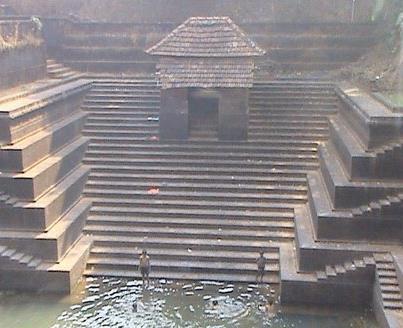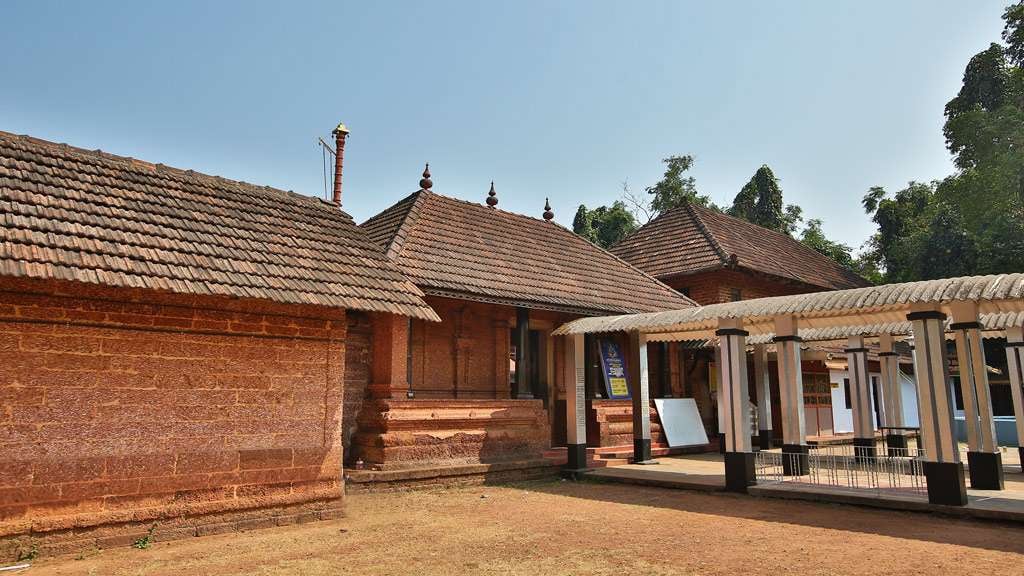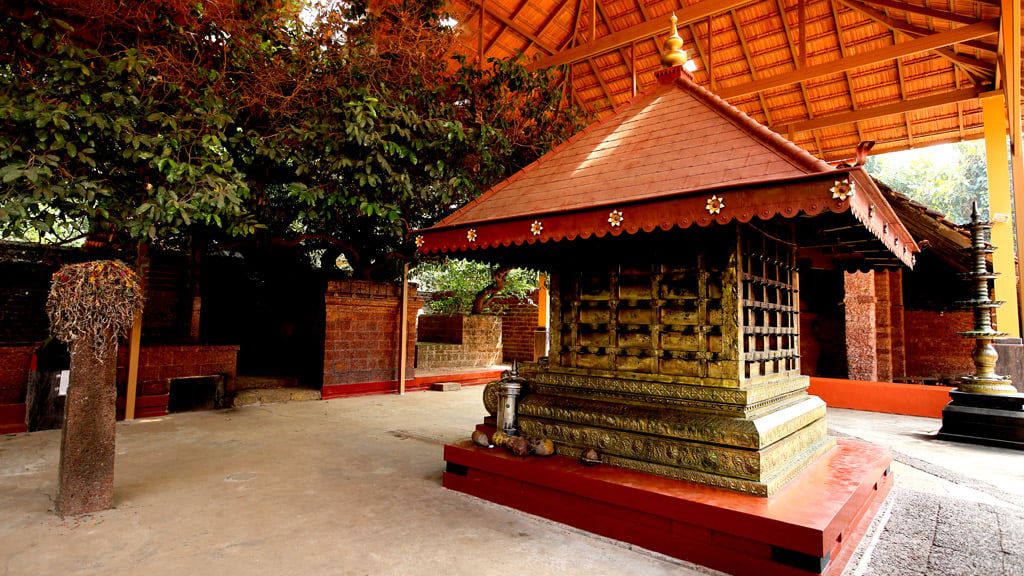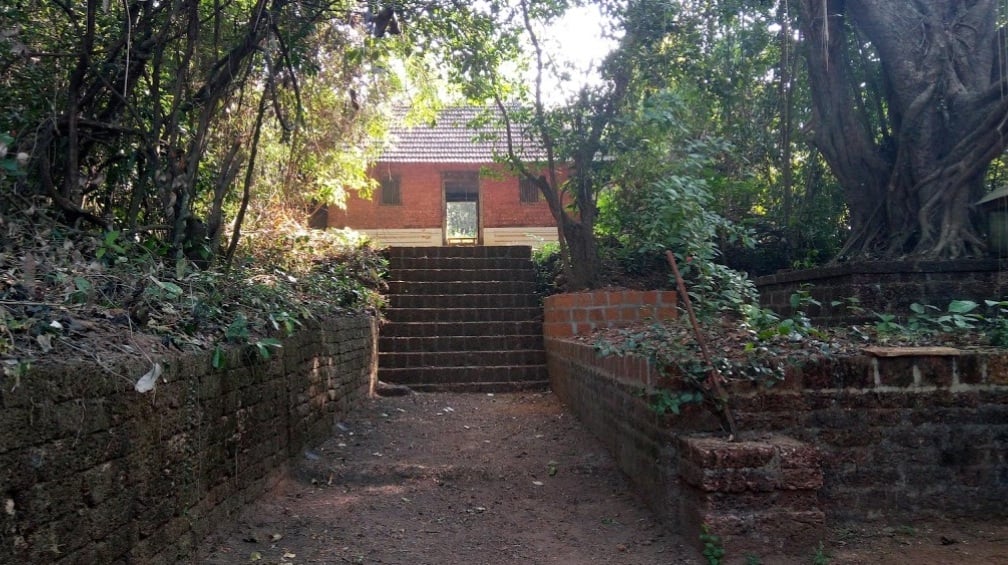Sree Oorpazhachi Kavu is a prominent Hindu temple located in the Edakkad Grama Panchayat of Kannur District, Kerala, in southern India.

In the 1790s, during the invasion of Malabar by Tipu Sultan, the temple administration fled with the idols and other valuables to protect them from looting. They found refuge in the confidential sanctuary of the Akkaraveettil Tharavad in Thalassery. The deities were housed there until Tipu Sultan withdrew from the region, after which they were brought back and re-consecrated at the temple. In recognition of this, the Akkaraveettil family later donated their Thevarappura (a worship house) to the temple administration, as it had served as the deities' sanctuary during the crisis.
The temple underwent significant expansion and reconstruction between 1845 and 1899. The name “Oorpazhachi” is rooted in the Malayalam word Oor, meaning village, and Ooraalan (or Ooraalar in plural), meaning the master or proprietor of the village. Historically, the temple served as the seat of an Ooraalar, a local authority that exercised partial autonomy and managed regional affairs. Nine prominent Nambiar families held this title and formed the temple and village assembly, playing a key role in local governance and decision-making.
The temple's three main deities are Bhagavathy, Sree Oorpazhachi Daivathar, and Kiratha Sunu (Vettakkorumakan). Within the inner courtyard, one can find sanctums dedicated to Shaiva, Vaishnava, and Shaktheya traditions, symbolizing the temple's inclusive spiritual heritage. There is also a shrine for Thondachan located at the upper citadel, known as Mele Kottam.
The deity of Bhagavathy represents the Mother Goddess. A well-known legend associated with her at Sree Oorpazhachi Kavu recounts how Goddess Kali (the dark-complexioned form of Parvathi) transformed into Gauri (the fair-complexioned form).
According to the tale, Lord Shiva frequently referred to her as "Kali," which she perceived as mocking her appearance. Deeply hurt, she lamented, "Wounds from arrows may heal and felled trees may regrow with the rains, but a heart wounded by harsh words cannot be mended." Determined to change her appearance, she left her home and undertook a long penance that lasted a hundred years. Pleased by her devotion, Lord Brahma granted her the complexion of a lotus tendril (gaura varnam), thus transforming her into Gauri.
Sree Oorpazhachi Daivathar is considered a manifestation of Vaishnava energy (Vaishnava amsham). According to legend, he became known as Sree Oorpazhachi Daivathar following a divine encounter involving Kiratha Sunu, also known as Vettakkorumakan.
Vettakkorumakan, a mighty warrior, had become proud and troublesome to the gods. In response, Lord Vishnu disguised himself as a hunter and challenged him to a duel. During the intense battle of arrows, Vettakkorumakan sensed a divine presence in his opponent and asked, "Daivathil aar?" (Who among the gods are you?), to which Vishnu responded, "Daivathar." This moment marked the transformation of the legend and the divine recognition of Daivathar. The deity Vettakkorumakan is considered a manifestation of Shaiva amsham (Shaivite essence). According to legend, he is the son of Lord Shiva and Goddess Parvathi. As a child, he became unruly and disruptive, causing chaos in the heavens.
To bring order, Lord Mahavishnu intervened, humbled the boy, and eventually granted him a churika (sacred dagger) as a symbol of his power and responsibility. Once satisfied with his transformation, Vishnu blessed him. Vettakkorumakan is revered as a fierce but ultimately just deity.Thondachan is worshipped as the Kshetrapalan, or the guardian deity (temple custodian), and is also believed to be the ancestral spirit of the temple community.
His shrine is located at the upper citadel (Mele Kottam). The idol of Thondachan is depicted holding a bow and arrow in his left hand and a churika in his right. The citadel serves as the sacred stage for ritual performances of Vellattom and Kaliyattom — traditional oracle dances that represent Vaishnava and Shaiva aspects respectively. Thus, Thondachan is venerated as a unified form of Vishnu and Shiva — both Guru (spiritual guide) and Vaidya (divine healer).
ഊർപഴച്ചിക്കാവ് ഭഗവതി ക്ഷേത്രം
കണ്ണൂർ റെയിൽവേ സ്റ്റേഷനിൽ നിന്ന് 14 കിലോമീറ്റർ അകലെ എടക്കാട് എന്ന സ്ഥലത്ത് സ്ഥിതിചെയ്യുന്ന പുരാതന ക്ഷേത്രമാണ് ശ്രീ ഊർപഴച്ചിക്കാവ് ക്ഷേത്രം. ഭഗവതിദേവി, ശ്രീ ഊർപഴച്ചി ദൈവത്താർ, വേട്ടക്കൊരുമകൻ എന്നിവയാണ് ക്ഷേത്രത്തിലെ മൂന്ന് പ്രധാന ദേവതകൾ. മേലെ കോട്ടത്തിൽ തൊണ്ടച്ചന്റെ ഒരു ക്ഷേത്രവുമുണ്ട്. ഒരേ ക്ഷേത്രപരിസരത്തുള്ള ശൈവ-വൈഷ്ണവ ശ്രീകോവിലുകളെക്കൊണ്ടു ക്ഷേത്രത്തിന് അപൂർവമായ പ്രാധാന്യമുണ്ട്.
വില്വമംഗലം സ്വാമിയാർ ഊർപഴച്ചിക്കാവ് ക്ഷേത്രം സന്ദർശിച്ചതായി ഐതിഹ്യമുണ്ട്.ഒരു ശൈവക്ഷേത്രത്തിൽ നിന്ന് ഭക്ഷണം കഴിക്കില്ലെന്ന ശപഥം ചെയ്തതിനാൽ അദ്ദേഹം ക്ഷേത്രപരിസരത്ത് പ്രവേശിച്ചില്ല.
ക്ഷേത്രകുളത്തിൽ കുളിച്ച ശേഷം അവിടെ വിശ്രമിക്കുകയും ചെയ്തു.പിന്നീട് രണ്ട് ബ്രാഹ്മണർ അദ്ദേഹത്തെ സമീപിച്ച് കാവിന് വൈഷ്ണവ സാന്നിധ്യമുണ്ടെന്ന് അറിയിച്ചു. സംശയത്തോടെ സ്വാമിയാർ ക്ഷേത്രത്തിൽ പ്രവേശിച്ച് ഭക്ഷണം കഴിച്ചശേഷം ആ രണ്ട് ബ്രാഹ്മണരും അപ്രത്യക്ഷരായി. മിഥ്യാധാരണയിൽ നിന്ന് അദ്ദേഹം അത്ഭുതപ്പെട്ടു. ക്ഷേത്ര കുളത്തിലേക്ക് അദ്ദേഹം ജപിച്ച മണ്ണിനെ എറിഞ്ഞതായും പറയപ്പെടുന്നു. ഈ കുളത്തിൽ മുങ്ങിയാൽ രോഗങ്ങൾ ഇല്ലാതാകുമെന്ന് ഭക്തർ വിശ്വസിക്കുന്നു.
ഭഗവാനോടുള്ള പ്രാർത്ഥനയായി എല്ലാ ദിവസവും ഉച്ചയോടെ ദൈവത്താർ വെള്ളാട്ടം (തെയ്യം) നടത്തുന്നു. ജില്ലയിലെ മറ്റ് ക്ഷേത്രങ്ങളിൽ സംഭവിക്കുന്നത് വളരെ അപൂർവമായ കാഴ്ചയാണിത്. വേട്ടക്കൊരുമകൻ കളിയാട്ടവും ഇടക്കിടെ നടത്തപ്പെടുന്നു. ഉത്സവങ്ങളിൽ കുംഭമാസത്തിലെ ശിവരാത്രി മഹോത്സവം, മണ്ഡല വിളക്ക് മഹോത്സവം, നവരാത്രി എന്നിവ വലിയ ആഘോഷങ്ങളോടെയാണ് നടത്തപ്പെടുന്നത്.
Address:
Nadal Railway Gate,
Kerala 670663



